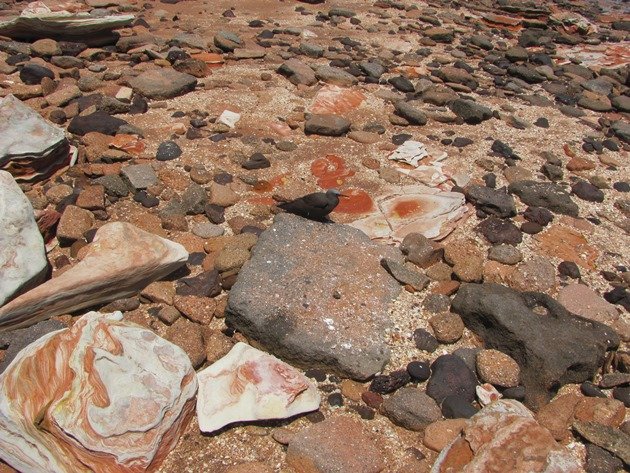
When we have cyclonic weather around it is always worth going out to look for any birds that have been blown off course. It is not always a fruitful search and sometimes it can be a few days after the tropical low or cyclone passes by before anything is observed. In fact it was just a casual walk along the shoreline in Broome heading towards the port several days after the windy and wet weather that I accidentally flushed a bird roosting on the rocks. It was the furthest bird species from my mind as the sky was blue and all had returned to normal. Although my last view of a Common Noddy was on 2nd March 2008 in cyclonic weather I knew what I had found. Last time the Common Noddy had been sat on the sand on Riddell Beach in Broome surrounded by over 200 Lesser Sand Plovers and flying in the thermals overhead were several Edible-nest Swiftlets. That was a memorable afternoon in the wind!
The Common Noddy was well-camouflaged on the rocks and had not flown far. I rang Grant to come from work as it would be a shame to not see such a rare bird on our shoreline and even more of a shame to not have it on a list! I was able to take some photographs of the Common Noddy perched on the rock and continued on along the shoreline looking at shorebirds. Grant rang to say he could not see it when he got there, but I was sure it would still be roosting there and a few minutes later he found it on the next rock over. Some people had walked along and it had moved a few metres.
Common Noddy
I returned from my walk to the port and back observing the thousands of shorebirds and the tide had fallen substantially and several people had been onto the beach. The Common Noddy had moved to another rock further out from the high tide line and was perched there. I took a few more photographs in the late afternoon light of this beautiful bird.
Common Noddy
The following day the Common Noddy was gone and had no doubt rested enough to return to its life at sea. They feed on small fish and nest on outlying islands and it was an incredible bird to add to my 2014 list on January 2nd. We won’t mind a few more tropical lows coming down from the north if they bring us some good birds!


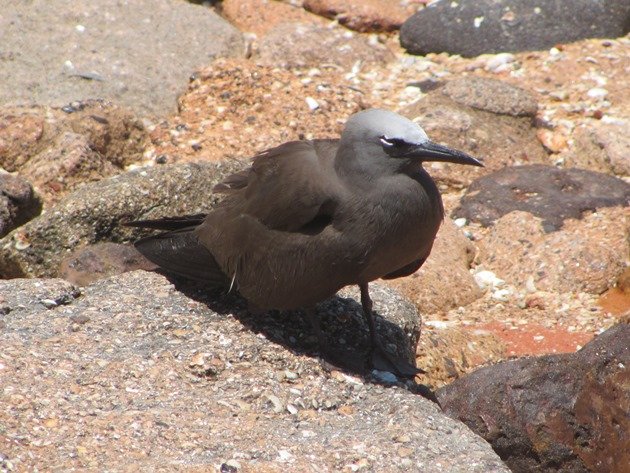
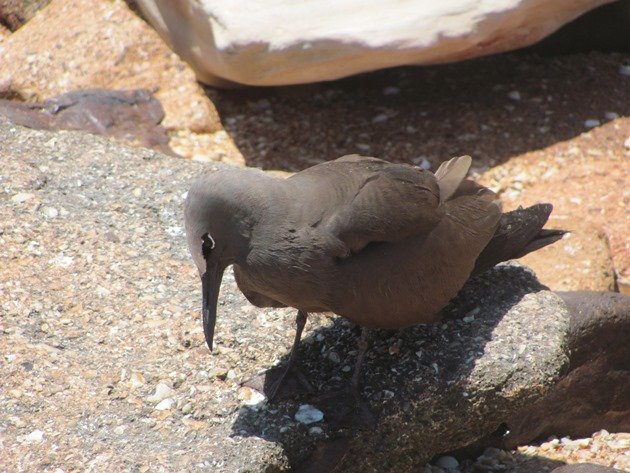
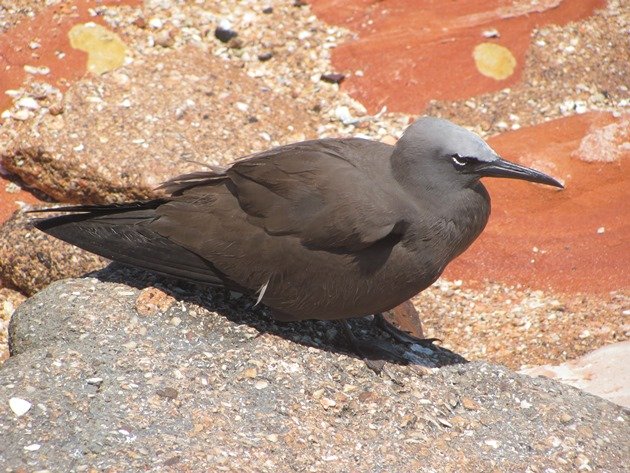
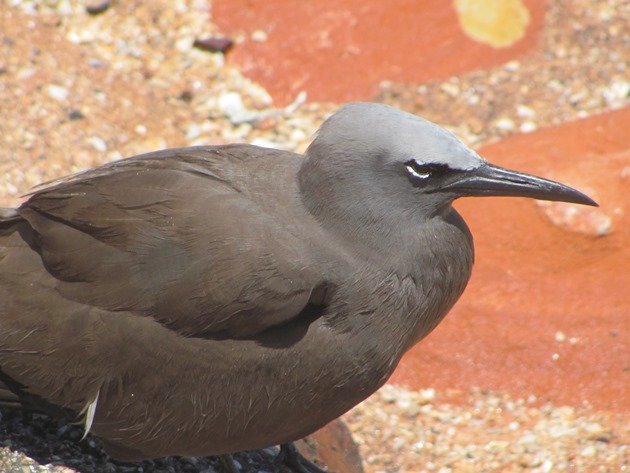

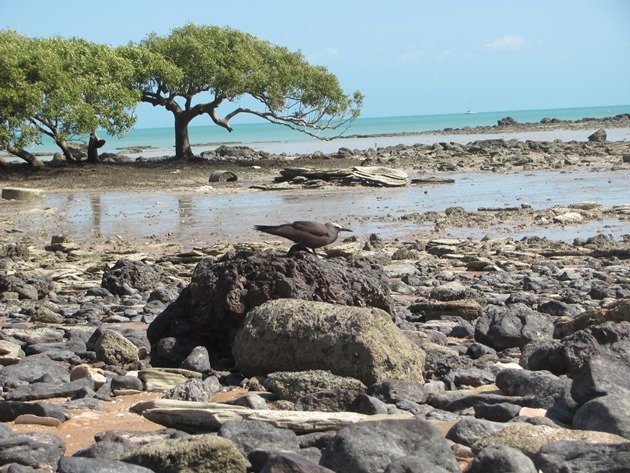
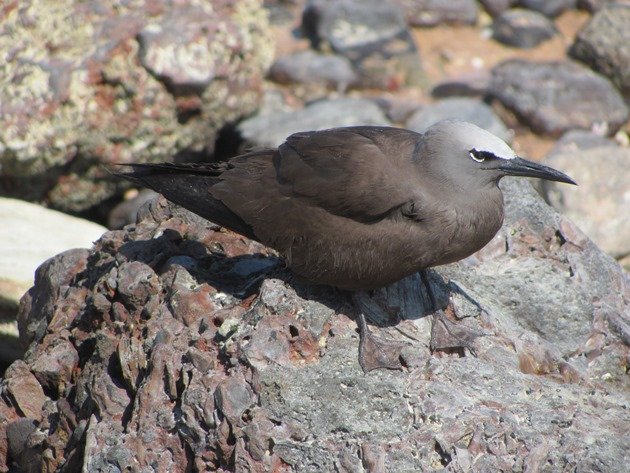











Hi Clare. I know it is summer in Australia, but looking at your year list I was wondering where you are at in terms of migration?
And thanks for the pictures of the Common Noddy. I particularly liked the more distant picture of it sitting on the rock with ocean in the background.
Thanks, Bob
Hi Bob, The thousands of migratory shorebirds here will start to get their breeding plumage over the next few months and start to depart to go north in April with the last leaving by mid-May. The Red Knot are usually last to leave. With recent rains some of the other birds have dispersed across our normally dry continent. The next few months are always interesting!